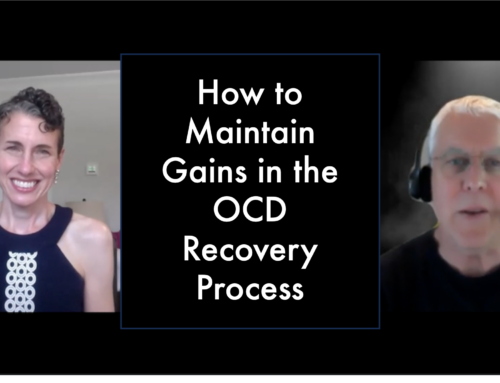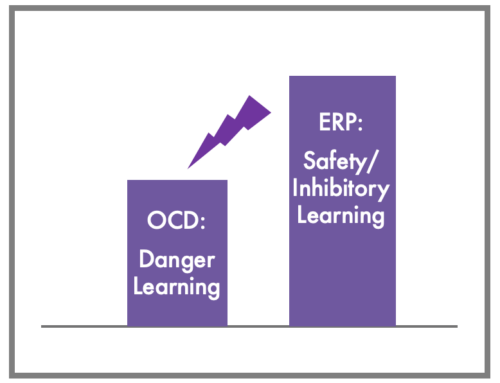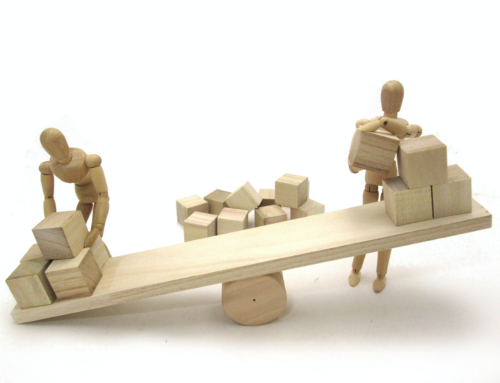People pleasing is about avoiding anxiety
You don’t have to have OCD to engage in people pleasing, but people with OCD often end up participating in this exhausting compulsive behavior of doing things for others for fear-based reasons. It often takes the form of “I have to or I should do this, or [negative consequence will happen].” People pleasing is all about trying to avoid anxiety and/or other challenging emotions, by taking actions that seem to help you:
- Manage other people’s thoughts or emotions in general.
- Manage other people’s thoughts or emotions about you.
- Live up to what some people might think of as a societal norm that OCD has distorted into an all or nothing proposition (and I would even question whether some of the things we think we “should” do are even societal norms, or whether they are really rules OCD has created for us to follow so that we’re living according to its strict standard, bringing us to #4).
- Satisfy your OCD’s definition of being a “good person” (this might be thought of as trying to make your OCD think nice things about you…which as we all know is probably not even possible).
- Keep other people from turning their negative emotions towards you.
- Avoid general catastrophes involving others, including becoming abandoned, ending up alone, etc…
As you can see from this list, sometimes we’re trying to please one person, sometimes a group, sometimes society or the whole of humanity (because OCD likes to aim high). But it’s important to remember that people pleasing is about trying to avoid anxiety, regardless of which of the above it seems we’re trying to achieve.
Doing things we “have to” or “should” do
Here are some examples with references to the above #1 – #6 list of what it seems we’re trying to achieve:
- I have to hold the door open for people in the grocery store because if I don’t…
- People will think I’m rude (2)
- I’m not doing what I’m supposed to do (3)
- I’m not a good person (4).
- I have to check emails and texts constantly so that I can reply immediately because if I don’t…
- I’ll leave people waiting (1)
- They’ll think I’m not doing my job (2)
- It’s the right thing to do to respond promptly (3).
- I have to accept all social invitations because if I don’t…
- People will think I don’t like them (2)
- People will be disappointed or get mad at me (5)
- My life will be unsatisfying and lonely (6)
- I’m not doing what I should be doing, as people should spend time with their friends (3).
It’s not only what we’re doing, but how we’re doing it
We can further break people-pleasing down into what we’re doing and how we’re doing it. It might not only be the act of holding the door but also that you ensure you turn around and smile at the person coming through behind you. It might be responding to emails quickly and with lots of emojis and exclamation marks so that it’s “clear” to the recipient how happy you are to be communicating with them. It might be accepting all social invitations and being sure to be right on time, dressed to the nines, and bringing a little gift.
In other words, it could be both the action and how we’re doing it that comprise the people pleasing compulsion OR the action itself might not be a people pleasing compulsion until we’ve layered how we’re doing it on top. For instance, the people pleasing aspect might be feeling that you “have to” do a behavior all the time without exception, instead of doing it when you want to.
But please remember that it’s unlikely that all actions you’re doing for others are people pleasing, and don’t let OCD tell you otherwise!
Avoiding anxiety and ending up with resentment
 The problems with people pleasing include:
The problems with people pleasing include:
- It’s exhausting because you feel like you’re onstage performing for others the majority of the time.
- You aren’t achieving what the OCD would have you believe, because we can’t control how other people feel or what they think. You might do something you think is incredibly kind for someone and they take it another way entirely, thinking instead that you’re insincere or trying to win favors. But wait, you say, I asked them and they said it made them happy! (How many times have you told a small white lie so as not to hurt someone’s feelings?) The point is we will never really know what someone thinks or feels!
- Not only are we not getting the desired happy thoughts and feelings out of others, but we often don’t end up happy either, because we aren’t being true to ourselves. We’re doing what we think we “should” do for fear-based reasons, instead of pursuing what’s important to us. Over time, this lack of meeting your own needs can make you feel resentful towards the very people you’re trying to please and can leave you so worn out that you don’t have the energy help yourself or others in a non-people pleasing way.
Break the people pleasing cycle
I was a master at the people pleasing compulsions for decades until I learned how to break the cycle through ERP. One idea for how you can try to use exposure and response prevention therapy to reduce people pleasing is to:
- Make a list of what you think your people pleasing behaviors are (OCD will probably argue with you along the way, but just write things down anyway. Doesn’t have to be everything or dissected like I have above….we just want to get a list, not an OCD-perfect list!)
- Share your list with a loved one you trust, and ask them how they handle the situations where you think you’re people pleasing. This is a way to gauge what’s people pleasing behavior and what’s not….if your loved one isn’t doing the behavior (never holds the door for people, for instance) or doesn’t even notice whether she holds doors for people, then if you are, it’s probably people pleasing. But note this isn’t a perfect gauge, as some of this people pleasing behavior can be subtle. Also, we are not using this exercise to get reassurance that it’s okay to not do these behaviors because someone else isn’t doing them! We’re just trying to get a read on what people without OCD people pleasing are doing to help us evaluate our own behaviors.
- Try some ERP exercises of doing what your loved one would do instead of the people pleasing behavior. This is obviously going to make your anxiety go up, and this is the point. See my Anatomy of ERP for OCD for more information on doing ERP.
- Recognize that the goal is to live with uncertainty. As I wrote about my own people pleasing exposure work in my memoir, Is Fred in the Refrigerator? Taming OCD and Reclaiming My Life:
The goal is to be somewhere in the gray, embracing uncertainty. With Shoulders Back, I embody acceptance of being unsure what others think and why. It can still hurt when people don’t think positively of me, but I can recognize that what anyone else thinks is not under my power, or my OCD’s power, to control. (p. 224).
I highly encourage everyone to enlist the help of an ERP therapist, as they can help you develop people pleasing exposures and work with you to help you learn how to do them most effectively.
People pleasing episode of Your Anxiety Toolkit
Kimberley Quinlan, LMFT and I discuss people pleasing in detail on episode 211 of her Your Anxiety Toolkit podcast.
Learn more about taming OCD
To learn more about how I used ERP to tame my OCD people pleasing compulsions, read or listen to Chapter 16, “Shoulders Back,” in Is Fred in the Refrigerator? Taming OCD and Reclaiming My Life. Click here to purchase a copy.
Sign up for my Shoulders Back! newsletter to receive OCD-taming tips & resources, including notifications of new blog posts, delivered every month to your inbox.
My blogs are not a replacement for therapy, and I encourage all readers who have obsessive compulsive disorder to find a competent ERP therapist. See the IOCDF treatment provider database for a provider near you. And never give up hope, because you can tame OCD and reclaim your life!







Leave A Comment